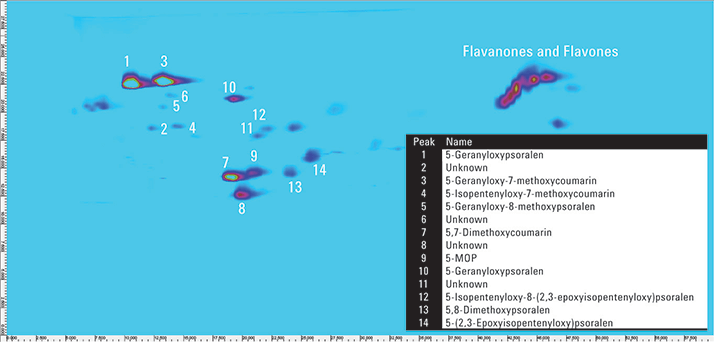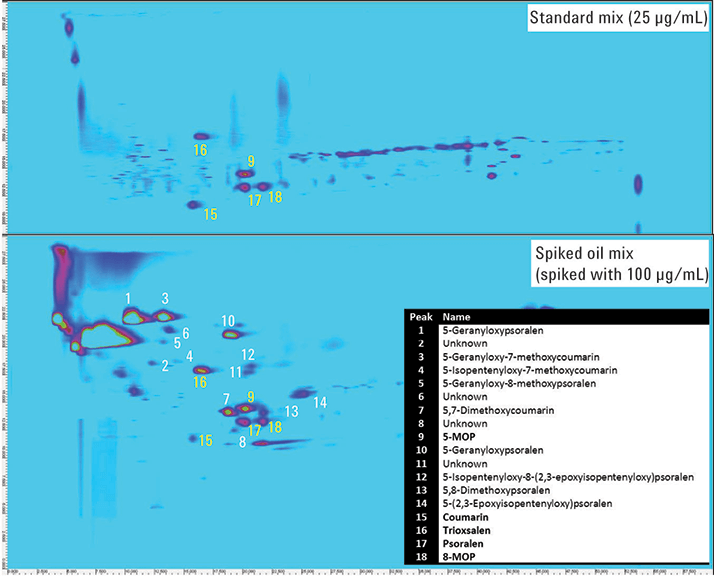Citrus oils are applied in numerous consumer products such as cosmetics and sun protection, food flavoring, and so forth. These oils contain significant amounts of psoralens, methoxylated flavonones, and flavones. A specific species of psoralens, namely furocoumarins, have been identified as photomutagenic and photocarcinogenic products. The analysis of such compounds in citrus oils can be done by (U)HPLC, however, chromatograms of such samples can be complex, and there is only limited certainty that a small peak for a target compound will be separated from other sample constituents. To increase the separation probability significantly, a radical increase in peak capacity is required. This can be accomplished by using comprehensive two-dimensional LC. A combination of normal-phase LC (NPLC) for the first dimension and reversed-phase LC (RPLC) for the second dimension resulted in good orthogonality.

Oil profiling Various oil samples were analyzed and Figure 1 shows the plot for the analysis of a lemon/orange oil mix. The mixture contains various psoralens and analogs, and methoxylated flavonones and flavones. The latter are considerably more polar compared to the lemon oil compounds and need a stronger mobile phase to elute from the normal-phase column. Therefore, a fast gradient to 70 % ethyl acetate is applied from 35 to 36 minutes. As a consequence, the second dimension gradient needs to start with a 100 % aqueous mobile phase throughout the run. This focuses the loop content on the reversed-phase column.

Furocoumarins Figure 2 shows the plot of a spiked mixed oil sample. It is clear from the contour plot that there are coelutions between the target compounds themselves, and between targets and matrix constituents in both of the single dimensions. The orthogonality with the second dimension results in separation for these compounds.

Different lemon oils were compared with the Agilent 1290 Infinity 2D-LC Solution and the method proved to be useful for characterization of the oils regarding their psoralen, methoxylated flavonone, and flavone content. www.agilent.com/chem/infinity-2dlc





